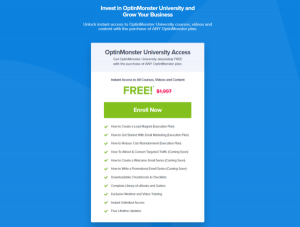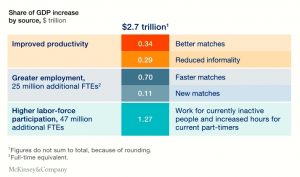Most companies agree that people are their most valuable assets.
In today’s hyper-competitive hiring market, CEOs and hiring managers are struggling to figure out the best ways to attract and retain top talent.
What they fail to realize is that for today’s worker, salaries are more of a threshold than a scorecard. In fact, that there are many more effective ways to keep your talent happy and engaged.
But what perks really matter to employees? If salaries don’t always move the needle, what does? The answers might surprise you…
Using data from a recent Glassdoor survey, we’ve compiled the sixteen best employee perks and benefits that offer the biggest bang for your buck into the infographic below.

1. Healthcare Insurance

40% of respondents to Glassdoor’s Q3 2015 employment confidence survey said that they value health insurance more than a pay raise.
The reasons for this are manifold. Of course, until very recently, there was no affordable public health insurance option, and the only feasible way for most Americans to afford insurance was through their employer.
Employee-sponsored coverage is still generally much less expensive than public or private insurance.
But most of all, there is a peace of mind that comes with knowing that you and your loved ones are covered in the event of a major accident or illness, and you really can’t put a price on that.
There are perks that come with health insurance on the employer side as well. Companies benefit from reduced absenteeism due to illness (thanks to free or nearly-free preventive care), as well as higher engagement due to the fact that employer-sponsored health insurance gives employees a sense that they are cared for and appreciated.
2. Vacation / Paid Time Off

It’s been said that time is our most valuable commodity.
As Rick Warren writes in his book, The Purpose Driven Life, “Time is your most precious gift because you only have a set amount of it. You can make more money, but you can’t make more time…. Your time is your life.”
Similarly, studies have shown that once our basic needs are met, experiences contribute to our long term happiness much more than material things.
For these reasons, a preponderance of respondents to Glassdoor’s survey indicated that they valued vacation or paid time off over a salary raise.
Many companies have escalated this idea to its logical extreme, and instituted open vacation policies.
While it may seem counterintuitive, companies like Netflix and Austin-based Umbel have found that an unlimited vacation policy can have a wide range of benefits, including more productive employees.
Don’t be mistaken – an unlimited or “open” vacation policy doesn’t mean that employees can take off half the year and still collect a paycheck. Rather, companies that adopt these policies allow employees as much PTO as they need to recharge as long as they meet deadlines and produce results.
Aligning your vacation policy with results rather than basing it on accrual can have a profound effect on your organization’s overall culture.
Zen Payroll CEO Joshua Reeves believes that this focus helps create “an ownership mentality,” and finds that an open vacation policy empowers his employees to focus on what’s best both for themselves and for the company.
Moreover, an open vacation policy signals to employees that their employer trusts them to keep projects on track and deliver results while being free to take all the time off they need. This trust engenders a feeling of mutual respect between the company and its employees, and the result is a more balanced, more productive workforce.
Demian Sellfors, founder of domain and hosting services provider Media Temple, is a strong proponent of sabbaticals. After three years at the company, Media Temple employees are highly encouraged to take a month off to take on new hobbies, experience new cultures in far-flung regions, or participate in service projects closer to home.

During this time, they are forbidden from checking work email or working on Media Temple-related projects. Many employees cite this perk as the reason they joined the company.
Sabbaticals are gaining in popularity across corporate America, typically lasting five weeks for employees who have been with the company for a minimum of five years. And while five weeks of paid time off might seem like a large chunk of unproductive time, it actually only amounts to 2% of an employee’s time within a five-year span.
Plus, employees return refreshed, energized, and with a new perspective they wouldn’t have gained otherwise. This fresh perspective can even result in new ideas or new market opportunities.
3. Performance Bonus

As we’ve demonstrated so far, the effectiveness of monetary incentives (particularly salaries) has its limits. However, that’s not to say that monetary incentives as a whole don’t work.
The key is to connect monetary rewards to the emotions that keep employees engaged in their work.
Performance bonuses are a fantastic way to do just that. By tying the reward to results, performance bonuses give employees a sense of ownership and control.
It helps motivate them in their work, and gives them a tangible ownership stake in their role. I.e., if they perform and hit their goals, they will receive a reward – one that they both earned and deserve.
4. Paid Sick Days
Similar to Vacation or PTO, paid sick days give employees back their most valuable commodity – their time – while also letting them know that they are cared for and appreciated.
An added benefit? It sets the right tone to keep your office healthy during cold and flu season.
We all know cultures in which taking a sick day is seen as a sign of weakness.
But offering paid sick days signals to employees that it’s ok to stay home when they’re under the weather.
By doing so, contagious employees stay away, and your company is much less likely to be decimated by widespread illness.

5. 401(K) Plan, Retirement Plan and/or Pension

Again, for many employees, peace of mind is invaluable.
Particularly, those who worked during the financial uncertainty of the Great Recession of the late 2000’s, financial security is a premium benefit.
Many employees find personal finance and financial planning a bit of a mystery, and appreciate when their employers help them plan for the future. 401(K)s and other retirement plans are convenient, automatic ways to do just that.
Employers can step their savings game up by subsidizing employee savings, either matching or partially-matching the contributions employee pay into their retirements.
6. Flexible Schedule (work from home)

Flexibility is increasingly becoming a desired perk for the modern employee, who is trying to balance a myriad of personal and professional responsibilities, including education and familial duties.
It’s especially true for employees with children at home. According to the Bureau of Labor Statistics, both parents work in 60% of the households with children in the U.S.
A flexible schedule – including the ability to work from home – is a necessity for these families, who need to be able to juggle multiple responsibilities.
Emotionally, affording employees flexibility in their schedule demonstrates that they are trusted partners (not just 9-5ers chained to a desk), and leads to higher engagement.
Ultimately, a flexible schedule leads to a greater quality of life. Employees feel like they don’t have to sacrifice their career in order to focus on their family or education – and vice versa. This provides more long term value than a salary ever could.
7. Office Perks

As we’ve discussed on this blog before, work-life balance is a thing of the past. In fact, it’s an inherently flawed concept. The term “balance” implies that “work” and “life” are countering each other, perpetually at odds.
In our eyes, “work-life integration” is a much more accurate description.
Increasingly, the expectation – especially from Millennial workers – is that you should be able to be your true self at work. There’s no point in pretending that we have two separate personas, a “professional” you and a “real” you.
Part of this new attitude is the idea that the office should be an enjoyable place to be.
That’s where office perks come in.
Why do they matter? Because when you spend the majority of your time in your office, it would be nice if that office was, you know… a place you actually want to be.
One of the simplest and easiest perks to provide is food.
A recent Harvard Business Review study showed that employees “typically consume one or several meals plus snacks during work hours.” This means that the food options available in the workplace matter a whole lot to the quality of the average office worker’s diet, and by extension, their overall health.
Employees will appreciate the gesture. Google is famous for offering healthy, gourmet-quality food choices that its employees love.
In fact, in a recent Quora survey, most Googlers cited the food options as the one perk they couldn’t live without.
The good news is you don’t have to have Google’s budget to make healthy food options available in your workplace. Affordable options like SnackNation bring the healthiest, best-tasting snacks right to your office. Access to healthy snacks in the office will make for happier, healthier, and more productive employees.
Focusing on employee health isn’t just a nice gesture, it’s also good business. Companies who invest in health and wellness actually save money in the long run by curbing healthcare costs and reducing productivity-loss due to illness.
The same Harvard Business Review study found that on average, employers who invested in comprehensive health and wellness initiatives (including healthy food options) saw a nearly 3-to-1 return in money saved.

Healthy snacking can be the foundation of an overarching wellness culture that lets employees know their health is important to your company. This message will also foster loyalty and strengthen the employer-employee relationship.
8. Employee Development Plans

In their book The Alliance, LinkedIn CEO Reid Hoffman and co-authors Ben Casnocha and Chris Yeh lay out how the employer-employee relationship has changed.
Lifetime employment, they argue, is no longer possible (nor desirable), and that means both companies and their employees ought to engage in a mutually beneficial relationship modeled after a “tour of duty” in the military. In fact the relationship is moving away from a transactional model and toward one that’s focused on the growth of both parties.
What does this mean? Well, it implies an acknowledgement that the tenure of the average employee is likely only going to be 3-5 years, and that the company is responsible for the personal and professional growth of the employee during that time.
Employee Development Plans are a perfect way to reflect this changing dynamic and ensure a mutually enriching relationship.
At SnackNation we’ve implemented IDPs, or Individual Development Plans. In them, employees work with their managers to identify four personal and four professional goals, as well as a pathway to achieving them. We ask employees where they want to be in five years, and determine the right steps to get there.
Bonus: You can download a blank version of our IDP template here (no email required).
In our economy, where job-hopping is the norm, employees need to constantly augment their skillsets, and employee development is priceless.
9. Tuition Reimbursement

Tuition costs have exploded in the last decade. The latest figures by the College Board reveal a 26% increase price increase for tuition and fees for four year private institutions, and a 40% increase for four year public colleges.
The numbers for graduate and professional programs are just as grim, with the average tuition for a Top 20 Business School setting you back more than $ 100K in total, and a comparable law school education costing upwards of $ 50K per year.
But the real kicker is the opportunity cost of not working for 2-3 years, which nearly doubles the actual cost.
The beauty of tuition reimbursement – and why it’s so highly valued by so many employees – is that it alleviates both the real and opportunity costs. Employees can simultaneously work and go to school, saving doubly in tuition fees and the opportunity costs of being unemployed.
10. Employee Discounts
Depending on your business, discounted access to your company’s products or services – or “dogfooding” – can be an exciting perk for employees.
The term dogfooding comes from the idea that a company with a good product should be able to “eat its own dog food,” and the practice can make employees feel valued and included. For product managers, early access for employees can even aid in the development process.
Many technology companies choose to beta test their products internally first, killing two birds with one stone: employees feel included and “in the know,” while product managers gain invaluable feedback as they get their product ready for launch.
Apple, Samsung, and Google have adopted this approach, providing employees with their much-hyped products before testing outside the company.
In the same vein, entertainment companies like Discovery Communications hold internal premieres of anticipated programs before they air for the general public. Again, the effect is to make your entire workforce feel involved in the process, and to express gratitude for their contribution to the final product.
Here at SnackNation, we take “product testing” very seriously:

11. Gym Membership or Wellness Program

Picture this: you work in a typical nine-to-five cube farm.
You put in a solid 8-10 hours per day at a desk in your demanding, high-stress job. Each day leaves you physically and mentally drained. You have a gym membership, but your commute makes it hard to workout in the morning. and by the time you get home, you are usually too exhausted to move.
“Maybe tomorrow…” you say as you dive into your Netflix queue. This cycle repeats day in and day out, until one day you catch yourself in the mirror… and it’s not pretty.
If this sounds familiar, you’re not alone. Anyone in today’s modern office environment knows how easy it is to fall into this trap. Sitting for the majority of your day, every day for long periods of time inevitably takes a toll on the body.
It’s no surprise that 22% of employees polled in a CareerBuilder survey say on-site fitness centers are their most desired office perk.
A 2015 study published in the Annals of Internal Medicine found that the sedentary nature of American work-life is having a deleterious effect on the health of American workers.
Sitting for too long at work brings with it a host of negative long term health effects, including increased risk of cardiovascular issues and cancer, as well as chronic conditions like Type 2 diabetes.
As an employer, the effect of the sedentary demands placed on workers include increased health care costs and a less productive workforce. But many companies have found ways to fight this trend.
Massachusetts-based EMC provides financial incentives for health conscious choices like getting a flu shot or joining a gym.
Others, like personal genomics company 23andMe, go a step further, providing onsite gym and workout space, and encouraging their employees to engage in physical activity throughout the day. In addition to offering daily onsite fitness sessions that include yoga, Pilates, and strength training, the company also makes treadmill desks available for their employees.

If you don’t have the space or money to invest in an onsite gym, there are a number of creative ways to introduce physical activity into the workplace.
Bringing in a trainer or yoga instructor once or twice a week for group fitness classes at a nearby park can provide a much needed boost. Even something as simple as encouraging daily stretching or walking meetings can have a tremendous impact.
But make sure that physical activities are never mandatory. Employees need to feel that they are free to choose their level of engagement in these programs, not matter how good it is for them. Mandatory health programs can make employees feel that they are being dictated to, and will diminish morale.
Integrating daily or weekly voluntary exercise activities during work hours signals to employees that their employers care about their health and wellbeing, and this strategy will actually pay dividends in the long run by shaving healthcare costs and keeping employees healthy and productive.
12. Stock, Stock Options and/or Equity

Similar to performance bonuses, stock options and equity give employees a real sense of ownership in the success of the business.
This helps bolster the emotional connection between employees and their work that’s so important for creating an engaged workforce.
Employees have a sense that their working life isn’t a mere transaction, but that they are working to create something bigger than themselves – and that they’ll be rewarded for their success.
13. Paid Parental Leave
It’s an unspoken fact that career success often comes with tradeoffs and difficult choices. Professional men and women often feel like they have to choose between a demanding career and a rich family life, and delay starting their families in order to focus on the former.
Unfortunately, the company’s gain can be the employee’s loss, as some couples experience fertility problems as a result of waiting.
These choices often go unacknowledged by employers, but a few smart companies have developed programs that allow strong work and family lives to coexist.
In a bid to attract more top women, Apple recently made headlines by announcing that it will be providing complimentary egg freezing services for its female employees. And many companies, including Microsoft, offer extended maternity and paternity leave that go above and beyond minimum requirements.
Offering fertility programs and over-delivering on maternity benefits sends a clear signal to employees that there are more important things in life than work, and investing in them is yet another way to cultivate a culture of respect between employee and employer.
Employees will be less stressed, more loyal, and ultimately more productive in return.
14. Childcare Assistance

As we’ve already seen, both parents work in the majority of households with children in the U.S. This means that childcare is non-negotiable for millions of workers.
Childcare costs can add up quickly, and anything to alleviate the burden is valuable.
15. Commuter Assistance
It’s not secret. We spend way too much time commuting.
According to Texas A&M Transportation Institute’s annual Urban Mobility Scorecard, commuters in major cities spent between 50 and 82 hours in their cars last year.

(Think of everything you could’ve accomplished in that time!)
Between rideshares, passes for public transportation, or even shuttle buses, there are a plethora of ways companies can subsidize commuting.
All things being equal, an employee will take a job with a short commute over a long one. In fact, she might even take money in exchange for a shorter commute.
Commuter assistance can go a long way towards improving their quality of life, and is therefore a perk that moves the needle when it comes to hiring and retention.
16. Diversity Program

Hiring for “cultural fit” has been a celebrated concept in the last several years. This basically means evaluating candidates not only for their skills and experience, but for how well they might fit into the organization.
In fact, many companies (particularly startups) only hire people that they “would like to have a beer with.”
But, as Dan Lyons recently highlighted in his book Disrupted, that can be code for “I only hire people who look like me.”
And as useful as it can be to make sure that newly hired employees jive well with the established culture, this practice also brings a danger that you’re just creating an army of “cultural clones” (an idea proposed by Adam Grant in his new book Originals).
A better practice is to hire for “cultural fit.” This requires auditing your existing culture and actively seek out diverse points of view.
In the long run, hiring for cultural fit is a more sustainable practice, and one in which everyone benefits.
Conclusion
Today’s employees (especially younger ones) have become accustomed to being catered to, and high-end perks are increasingly expected among workers with the most in-demand skill sets. And while it might seem hard to keep up with the Joneses, there are simpler ways to create an environment that even the most jaded workers will appreciate – ones that don’t involve higher salaries.
Keep in mind that 56% of employees say employee perks are very important when evaluating a job. Investing in the right employee perks can help you cultivate the culture your company needs to succeed, and will help your bottom line down the road.
What are the best company perks that have transformed the way you work? Let us know in the comments below.
Business & Finance Articles on Business 2 Community(92)
Report Post







